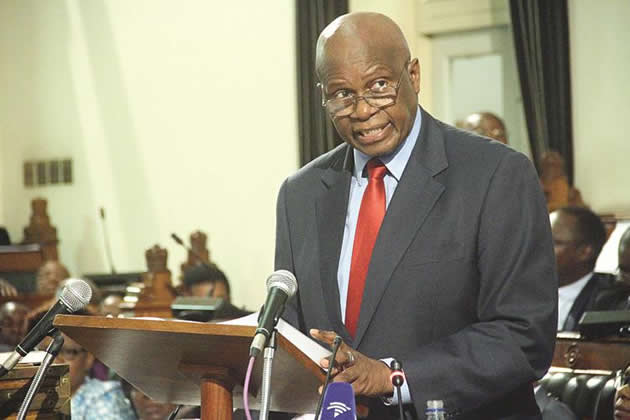Duty-free certificates use up $600 million

Oliver Kazunga Senior Business Reporter—
THE Government through various departments used duty-free certificates to import goods worth about $600 million between 2014 and last year contributing to the country’s high import bill. Latest figures from the Zimbabwe National Statistics Agency (Zimstat) show that the country’s exports in the first five months of the year remained negative at $949 million compared to imports amounting to $2,07 billion.
In 2015, Zimbabwe closed the year with exports amounting to $2.7 billion against imports of $6 billion, creating a $3.3 billion trade deficit. Finance and Economic Development Minister Patrick Chinamasa told Parliament last week that the goods that were imported by the Government using duty free certificates were in line with Treasury circular number 13 of 2005.
“About $292 million and $258.5 million worth of goods were imported by Government departments respectively. Duty free certificates cannot be used to clear goods for individuals, parastatals local authorities or similar organisations formed through an Act of Parliament,” he said.
The Government departments that imported various goods using duty-free certificates include Ministries of Media, Information and Broadcasting Services; Women’s Affairs, Gender and Community Development; Youth, Indigenisation and Economic Development; Defence; Finance and Economic Development; and Foreign Affairs.
However, Minister Chinamasa said it is important to note that some Government departments, particularly the Ministry of Health and Child Care, also receive donated goods from external donors.
“The goods are also cleared using duty free certificates. Furthermore, other critical Government departments use retained funds to import goods for their operations. “The Government, cognisant of the potential abuse of duty free certificates to clear goods for private consumption, has put in place measures to minimise such loopholes.
“This includes the removal of selected motor vehicles from the use of duty free certificate facilities,” he said. Since 2012, Zimbabwe’s exports have declined from $3.9 billion while imports have also receded from $7.5 billion.
Following the adoption of a multicurrency system in February 2009, the country has become a net importer of finished goods such as clothing and footwear, food and automobile products. This is on the back of low industrial capacity utilisation by the local manufacturing sector.
According to the Confederation of Zimbabwe Industries (CZI), the sector is operating at 34,3 percent owing to a lack of working capital, obsolete equipment and stiff competition from imports, among other reasons.











Comments